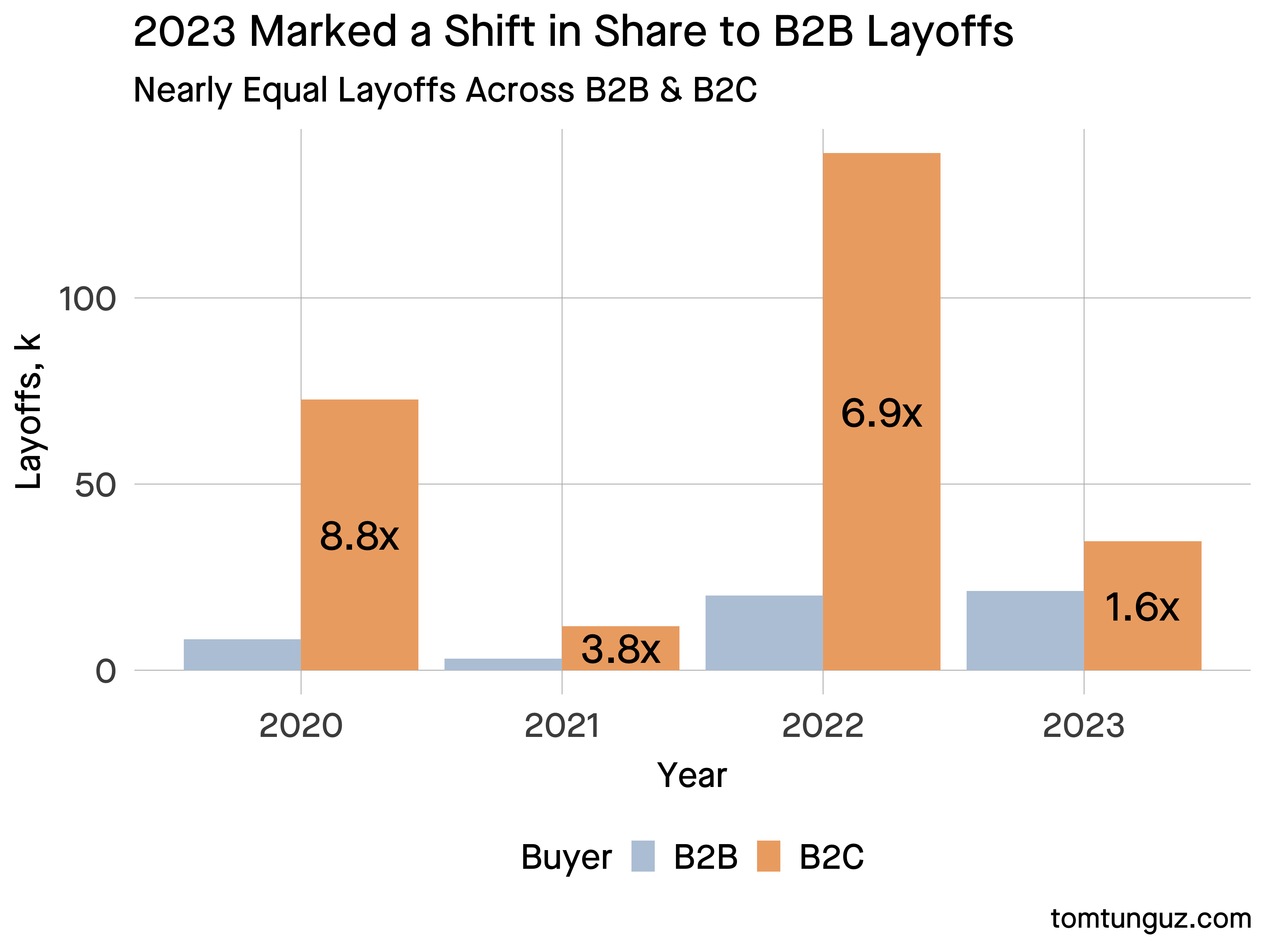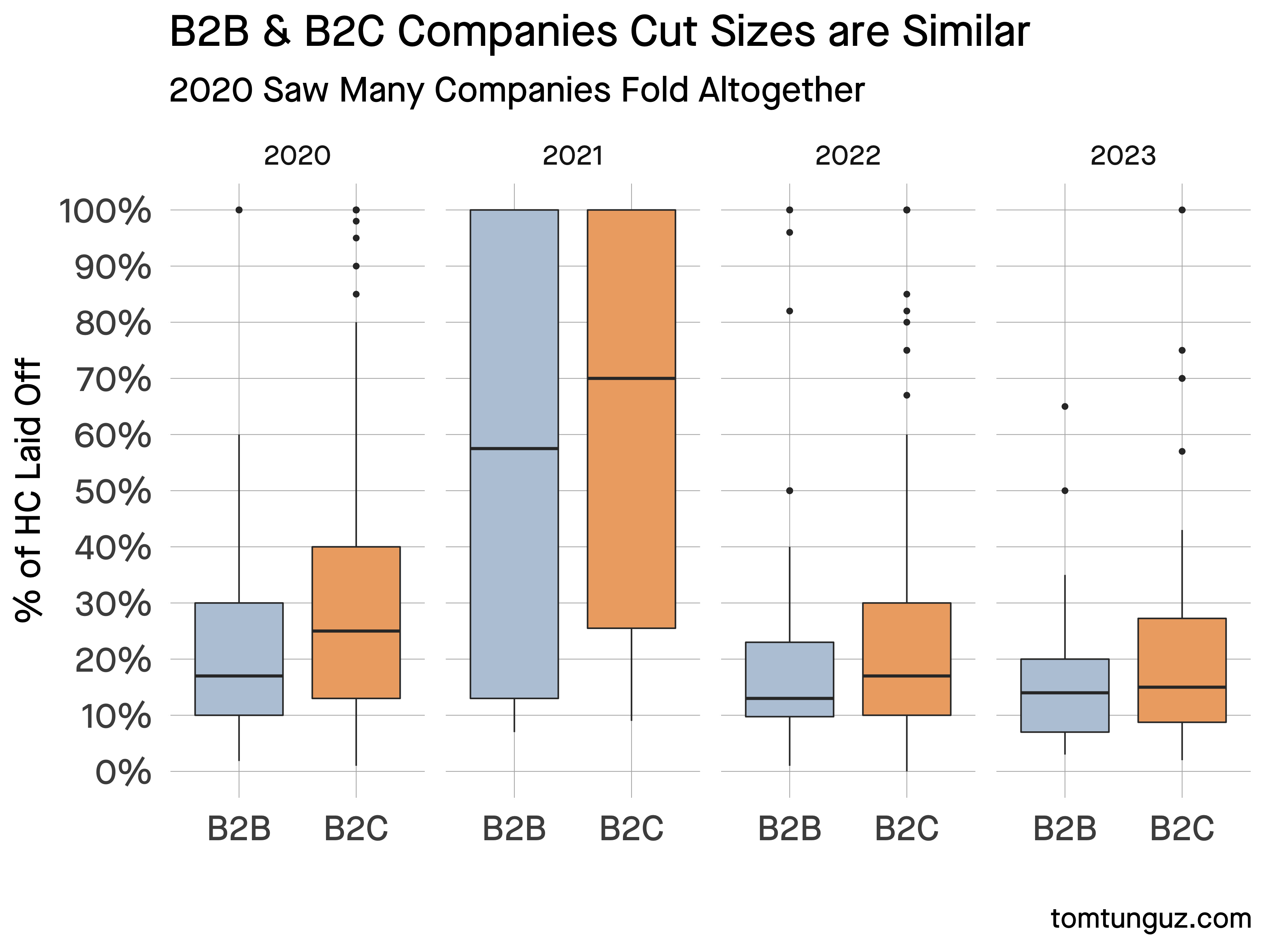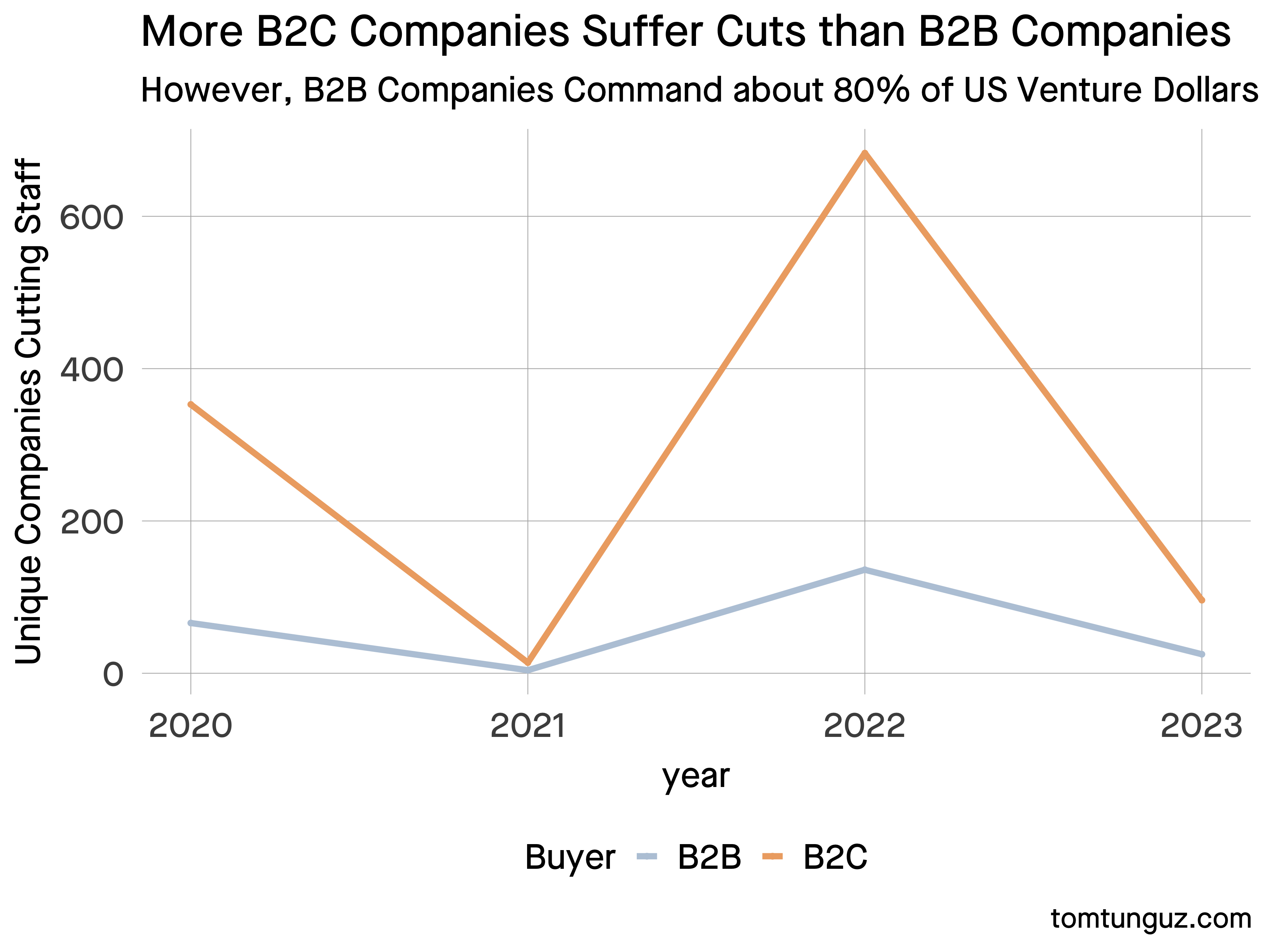2 minute read / Jan 23, 2023 /
How Layoffs in Startupland Differ Between B2B & B2C Companies
The current wave of layoffs, a difficult component of the innovation boom/bust cycle, differs from the previous years’ dynamics.
B2B companies have reduced headcount to a greater extent than at any time since 2020.

In the last three years, B2C startups’ ratio of layoffs have dwarfed B2B layoffs. In 2020, B2C companies cut 8.8x the number of B2B employees. 3.8x in 2021, & 6.9x in 2022.
Year-to-date in 2023, the figure is 1.6x, just 60% more.

Reduction magnitudes don’t differ by buyer type. B2B & B2C companies both downsize around 15% on average, with a 75th percentile of 30%.
Tangentially, Covid impacted both segments. The average layoff cut 50% or more of staff & more than a quarter of these businesses folded. But this is a statistical aberration from a tiny number of companies.

Instead, the gross number of companies explains the delta between B2B/B2C layoffs. But this isn’t an endemic phenomenon.
| Data Point | B2B | B2C |
|---|---|---|
| Companies Raised Capital | 21,256 | 17,109 |
| Total Raised, $b | 275 | 229 |
| Raised per Company, $m | 77 | 75 |
About 4k fewer B2C companies than B2B companies raised roughly equivalent capital since 2020, which means B2C companies may suffer from higher volatility in general: more exploratory business models, more risk to their core businesses when market conditions change.
Longer-term contracts & steadier enterprise buyers help smooth shocks for B2B companies.
The main challenges facing B2B startups today are decreases in seat counts as their customers downsize & slower sales cycles which creates volatility in bookings, which has caused more layoffs than an anytime in the last four years.